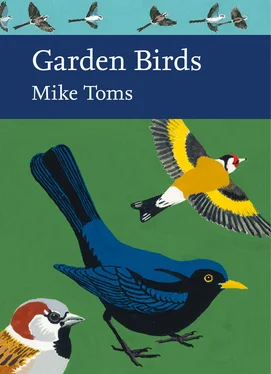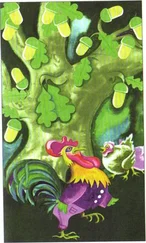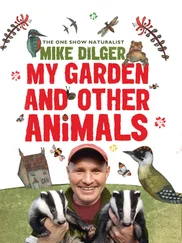DISEASE AND FOOD PROVISION
The presence of supplementary food at garden feeding stations may contribute positively to bird populations by increasing the availability of food during those periods when natural food supplies are in short supply. However, as will be explored in Chapter 4
, the provision of food at bird tables and in hanging feeders may also facilitate the spread of disease. The relationships between food provision and disease occurrence can be more complex than they first appear. It is not simply that garden feeding stations attract large numbers of birds, and through this lead to increased opportunities for disease transmission; in some instances the presence of the food can act to ameliorate the impacts of disease. This is something that has been studied in North America, in relation to the outbreak of the bacterial disease mycoplasmal conjunctivitis in North American House Finches (Fischer & Miller, 2015).
Mycoplasmal conjunctivitis impairs vision, making it difficult for affected individuals to find and locate food. If such individuals have access to abundant and predictable food resources, this may afford them with the time and energy needed to recover. Interestingly, there is also some limited evidence that individuals infected at feeding stations may develop less severe symptoms than those infected elsewhere, something that may lead to a faster recovery. Fischer & Miller (2015) used information from the FHWAR (Fishing, Hunting and Wildlife-associated Recreation) census to examine how food provision influenced House Finch populations before and after the emergence of mycoplasmal conjunctivitis. The two researchers found that the availability of bird food appeared to have a positive effect on House Finch populations, with House Finch density prior to the disease outbreak strongly related to the density of US citizens providing food for birds. After the disease arrived, reducing House Finch numbers substantially, the relationship between feeder density and finch numbers remained.
A comparison was then made between pre- and post-disease emergence populations, the researchers seeking to determine whether finch populations declined more strongly where feeder densities were high – which is what you might expect if high densities of feeders lead to high rates of disease transmission and, through this, to a correspondingly greater level of population decline. The results of the study revealed a positive relationship between changes in finch densities and changes in feeder densities between the two periods, indicating that higher densities of feeders actually resulted in lower rates of population decline. This adds weight to the work of Dhondt et al. (2007), suggesting that food provision might act as a ‘crutch’ for sick birds and improve their chances of survival and recovery. Other factors also need to be considered, not least that House Finches may spread mycoplasmal conjunctivitis to other species, including House Sparrow and American Goldfinch.
FOOD PROVISION AND BEHAVIOUR
As we have already discovered, food resources are central to many different aspects of a bird’s life, so it is little wonder then that the provision of food can alter behaviour. The area where we might expect to see clear evidence for changes in behaviour is in relation to territory, since territory provides a means of partitioning and defending resources, including food. Black-capped Chickadees show a degree of territoriality during the winter months, defending small foraging patches from intruders. However, as Wilson (2001) discovered, such territoriality breaks down when a significant food source is added to a foraging patch, the resident flock (typically the resident mated pair and six to ten first winter birds) unable to defend the new resource against the large numbers of other chickadees wanting to make use of it.

FIG 41. When supplementary food is available, both Blue Tits and Great Tits are less likely to join the mobile foraging flocks that are a feature of the early winter in woodland habitats in the UK. (Jill Pakenham)
A feature of the tit species that are familiar to garden feeding stations here in the UK is their willingness to form mixed-species flocks during the autumn and winter months, a behaviour that also occurs in other tit species elsewhere in the world. This behaviour is thought to improve an individual’s chances of finding food during those periods when food is scarce and encounter rates low. You might, therefore, expect to see the provision of supplementary food exert an influence on the tendency to form or join mixed-species flocks. This is exactly what Thomas Grubb found, working on tits in deciduous woodland in Oxfordshire (Grubb, 1987). Grubb was interested in whether mixed-species flocking was driven by predation risk, by food availability or by both. His results suggested that food was the primary driver; Blue Tits and Great Tits without access to supplementary food flocked with other species while foraging more often than was the case when supplementary food was available. Interestingly, Long-tailed Tits – which ignored the artificial food – foraged in mixed-species flocks regardless of whether or not provisioned food was available. Work in Japan on Varied Tit Sittiparus varius underlines the behavioural flexibility in whether or not individuals join mixed-species flocks (Kubuta & Nakamura, 2000), revealing that individuals participate in mixed-species flocks to obtain the short-term benefits of increased foraging efficiency but, independent of food provision, they also obtain long-term benefits from the stability of their pair bonds and strong site fidelity.
The studies just mentioned are relevant to the discussion of how the winter provision of food at garden feeding stations may alter the behaviour of the birds that visit. However, garden feeding may also change behaviour during the breeding season, something that may be of particular importance. As we shall see in our examination of the breeding ecology of garden birds ( Chapter 3
), the dawn chorus provides both a means to demonstrate ownership of a breeding territory and a mechanism to advertise your status as a mate. Research suggests that singing at dusk and, particularly, dawn may provide an honest signal of the energetic status of the singing male. If this is the case, then we might expect the availability of food in garden feeders to shape the performance of those males with access to it. Experimental work on Blackbirds supports this, with Cuthill & MacDonald (1990) finding that food-supplemented males sang significantly more than unsupplemented males. This difference was largely the result of supplemented males initiating song earlier and having higher peak rates of song delivery. Could this mean that male Blackbirds with access to a reliable food source at garden feeding stations are more likely to attract a mate than those nesting in other habitats where perhaps food is more limiting? A similar piece of work, this time on Great Tits, casts some uncertainty on whether the relationship is as simple as it appears from the work done on Blackbirds. Katja Saggese and her collaborators provided male Great Tits with a continuous food supply over two weeks and then compared their singing activity with a group of unfed males (Saggese et al., 2011). In contrast to Cuthill & MacDonald’s findings, the food supplemented males started their dawn singing later than the control males, an effect that still continued two weeks after the provision of food had ended. The researchers were unsure of the reasons for what they had observed, but they felt that it could have been due to the presence of predators, attracted to the feeding stations, or something about the quality of the food itself.
Читать дальше













